Are you ready to convert more visitors into customers?
You already know that starting a new blog is super easy and a great way of getting more site visitors.
But growing an audience that will read your content, trust your brand, and add to your conversion rate is difficult – in fact, so difficult that, according to Derek Halpern,
Most people who start blogs quit within the first 3 months.
Blogs fail to get any site visitors or make their mark in digital marketing for many reasons.
Michael Stelzner, founder of Social Media Examiner, said that
A common reason behind blog failures is a blogger who writes for himself — not their website visitor, social media crowd, or target audience.
In other words, you write posts that you feel are interesting and useful, without bothering to learn what your target audience and your site visitors truly want.
Whether your blog is 2 years or 2 months old, you’ve got a target audience. There are only two possibilities:
- Your audience is a website visitor to your page, or
- Your audience is somewhere else.
If your target audience is somewhere else, you need to bring them to your new blog.
What if your new blog is attracting readers but these people just aren’t upping your conversion rates? If they’re not subscribing to your list, reading and sharing your posts, or buying your product, then you have a conversion rate problem.
I want to show you some simple things that you can do to quickly increase your blog’s average conversion rate.
You’ll be able to optimize your new blog, get your content seen in more places, and convert those on a site visit into customers.
Remember, you don’t need thousands of site visitors when you first launch your blog.
Every successful blogger will tell you to focus on getting the most out of the 100 or so site visitors that your blog currently has.
Let’s do it.
1. Create specific landing pages.
Never send unique visitors to your new blog’s homepage. Instead, create specific landing pages and don’t forget to implement landing page optimization.
These landing pages can be added to your navigational menu bar, the way David does it on his blog:
Jon Morrow was one of the few bloggers who started from scratch and, within six months, built a loyal audience of site visitors.
That means it’s possible, if only you know how to get started.
Most blog homepages have too many elements. I think these are unnecessary when you’re the new dog in the neighborhood.
You need to get rid of the distractions to help new website visitors focus on your brand and message. This is how you start improving your conversion rate immediately.
Here’s a great example of a landing page without distractions (courtesy of John Lee Dumas). Notice that there’s no navigational menu bar – like you would find on a typical blog homepage.
At a glance, you’ll notice that the landing page above requires you to do one or two things:
- Watch The Freedom Journal Video
- Buy The Freedom Journal
We can view the above landing page as a new blog by John Lee Dumas, founder of Entrepreneurs On Fire.
He was smart. Instead of asking people to visit his blog to buy the book, he chose to use a dedicated landing page. This was an awesome idea for his landing page optimization.
Before Jon Morrow launched his blog: BoostBlogTraffic.com (now, Smartblogger.com), he created several landing pages with an eye towards improving his conversion rates.
And, on every authority site he contributed to, he linked back to his landing page. Even now, he continues to build and focus on dedicated landing page optimization to sell his products. Here’s a recent one:
The good news is that you can begin with one landing page for your site visitors. But, make sure to grow from there if you want to improve your conversion rate.
According to HubSpot, “Companies achieve a 55% increase in leads and conversion rates when increasing their number of landing pages from 10 to 15.”
Every click from your digital marketing efforts has to land somewhere – make sure that your clicks aren’t landing on your homepage.
A landing page allows you to stay focused on your digital marketing and to reach more and better prospects to build your average conversion rate.
For example, your homepage may be 100% focused on “sending pitches to magazine editors.”
This means that every guest article you write must be related to writing for magazines, winning over editors, writing a winning pitch, pitching editors, etc.
Consequently, instead of linking to your blog homepage that probably talks about “starting a freelance business,” you could simply link to your dedicated landing page and increase conversion.
This will improve the conversion rates of the people who came for a site visit and who clicked on your landing page link into email subscribers. From there, you can build relationships with them.
Then, introduce them to your blog and show them how to buy your product (more on this later).
If you’re ready to build high-converting landing pages, there are several drag-and-drop tools. I’ve tested all of these, and they’re great:
2. Customize your new blog for a specific audience.
Who is your new blog for?
If your answer is “everyone” – then you’re going to fail. You need to ensure that you know who your website visitors are going to be, so you can make a digital marketing plan that suits their needs, and work on the right kind of conversion rate optimization.
No one has ever succeeded helping everybody. Smart bloggers select specific target audiences.
Shopify’s blog is for people who want to build a successful online store. If you want to learn about ecommerce tips and tricks, as well as read case studies, that blog is for you.
And, ConversionXL is for anyone who wants to increase their conversion rates and learn more about conversion rate optimization.
Can you succeed as a technology blogger?
To be honest with you, tech is a huge industry. You’ll struggle to compete with the likes of Techcrunch, Mashable, Gizmodo, and Wired.
Instead of writing about all things tech, why not narrow your niche?
When you offer your site visitors something different, you can dramatically improve your average conversion rate, get noticed by the search engines, and even make a splash on social media.
You could focus on any of these: mobile tech, car tech, wearable tech, a specific brand, etc.
The moment a person comes to your blog (even before they read your posts), they should be able to decide whether your blog’s value proposition is right for them.
As an example, if you visit Carol Tice’s blog, you don’t need anyone (not even Carol) to tell you whether the blog is relevant to you or not.
You will see that it’s for those who want to make a living as a writer. It’s obvious.
That’s exactly what your new blog should do.
3. Offer something of value for free.
Millionaire Bob Burg says that the best way to make a lot of money is to give. Gary Vaynerchuk also made this concept popular with his book Jab, Jab, Jab, Right Hook.
I know. It might seem counterintuitive to give something of value away for free.
Data from Priceonomics found that Amazon shoppers prefer a $10 free gift card and a $20 gift card for $7, versus a $10 gift card for $5 or a $20 for $12. Why? One simple word: “free.”
Wait, but I thought you started your blog to make money?
I haven’t forgotten!
See, everyone loves free stuff. It’s the fastest path to getting social media shares and upping your average conversion rate. And, if you want your new blog to get massive social media shares, free inbound links and comments, then you need to create something that your competitors sell – and then give it away for free.
Here’s the thing: each time that you give something of value away for free, your target audience will trust you more.
Many people ask me how I managed to gain so much authority online and have such high site visit numbers. I usually tell them:
I create valuable content and give it away for free.
I spent $30,000 to create my advanced marketing guides and while many people assumed that I was going to sell them, I shared all of them for free.
These guides have generated tons of organic and referral traffic to my blog. Consequently, I’ve generated hundreds of thousands of dollars from big companies and my conversion optimization is off the chart.
Can giving away free valuable content work for every business model?
Yes, it can. And, it’s been proven to work for virtually any type of business. By giving away free content, Gregg Pollack, founder of Envy Labs, launched his first product. He invested $20,000 and got back $40,000.
However, if you’ve a subscription-based business, you’ll be in a better position to build confidence with people before they decide to pay for your services.
In my own case, I have several subscription business models. The content marketing strategy that’s working for us, enabling us to add a fair number of users to CrazyEgg.com and KISSmetrics, is creating valuable content and giving it all away.
Both Aweber and GetResponse use the same site visit strategy. Aside from their blog, the awesome team at Aweber went the extra mile, creating valuable email marketing guides and offering them on a dedicated resource page for their website visitors.
Stop trying to sell a product with your new blog. As successful bloggers, Derek Halpern, Marie Forleo, Pat Flynn, Jeff Goins, and others usually say:
Build your audience first, then launch your product to them.
I think this advice is spot on. Since nobody really knows your blog exists, it’d be awkward trying to convince people to buy your new product.
You’ve got to understand that a blog isn’t the best method for making quick money. It takes time. So, if you need quick money, go get a paid job or become a freelancer.
If you’re confused about getting started, the post below will guide you:
4. Use social proof at important sections of your site.
Social proof can transform a new blog into a trusted blog.
In simple terms, social proof is a demonstration of the trust or faith others have in you and your brand. More people will respond to your offer, because they saw others doing the same. This is why the wonder of social media is so good for improving average conversion rates.
As human beings, we all want to belong.
For example, you’re more likely to write a comment on a blog if you see that others have also commented.
And, most people share a piece of content on their social media sites, not because they’ve read it, but because they saw a huge number of people sharing it first.
Social proof can also take the form of testimonials or logos showcasing all of the great clients that you’ve worked with.
It’s become essential to include social proof in your blog (even if it’s new), because customers are becoming more informed and it will influence whether or not they make a site visit.
According to one study, nearly “63% of [American] consumers indicate that they are more likely to purchase from a site, if it has product ratings and reviews.”
Since your blog is fairly new, it means that you don’t have customers yet. Certainly, you don’t have a lot of comments on your blog.
So, are you supposed to make stuff up?
No, don’t do that.
Here are simple ways to get more social proof to help your conversion optimization:
a). Ask an expert to comment on your blog: For example, if Seth Godin says something about your blog, that’s social proof if you display it where your readers will see it.
You probably won’t get Seth in your first 12 months, but any influencer will do.
This is primarily the type of social proof that Brian Dean uses on his popular blog. You see, even a popular blog benefits from expert comments.
b). Contribute articles at authority blogs: If you want to showcase Moz’s logo as your social proof, all you’ve got to do is:
- Study the popular posts
- Find a unique angle
- Pitch a new topic (use data or case study)
- Write your guest post and submit it to the editor
- Wait for publication.
Once your guest article is published, you can use Moz’s logo to prove how credible and useful your content is.
Kristi Hines uses authority blog logos as her social proof. Potential clients will hire a writer just because of these logos.
In the same vein, if you want to showcase Entrepreneur.com’s logo on your new blog, get permission. How?
Contribute an article on the site and you’re good to go.
Conclusion
A new blog isn’t limiting you in any way. You don’t have to be small, just because you started something new, you can boost your site visits and conversion optimization.
Take responsibility. Focus on these two important content marketing strategies:
- Create long-form, useful, and interesting content consistently (hint)
- Promote the heck out of the content (hint)
Remember that your title plays an important role. For this reason, you should write catchy headlines and split-test them in your landing page optimization.
Use consistent and benefit-driven calls-to-action in your landing pages.
If you’re sending new visitors to your homepage, make sure that your homepage has a lead capture form – and a valuable lead magnet to give away – in exchange for the user’s email address.
With your new blog, spend less time driving traffic. Instead, focus on converting your current visitors into leads (this happens after they sign up to your email list).
Why is this critical? Well, for one, let’s assume that you’ve got 100 people on your email list.
If you take care of them and solve their problems, they can bring 1,000 new users to your blog.
What other techniques have you used to convert more visitors into customers on a new blog?


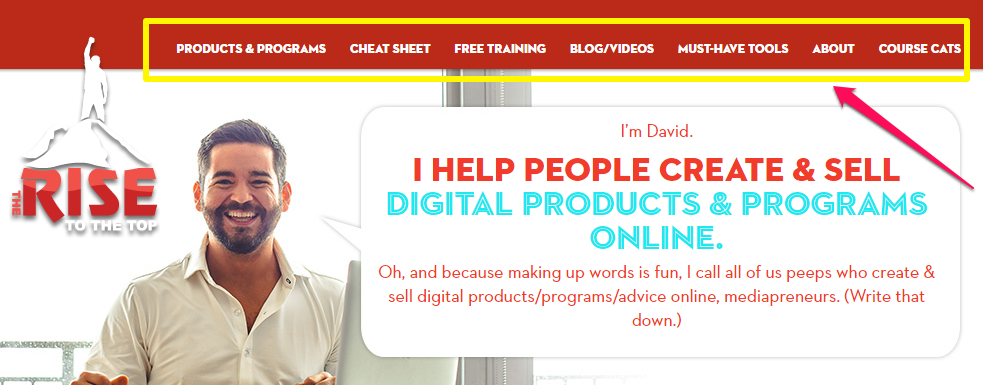

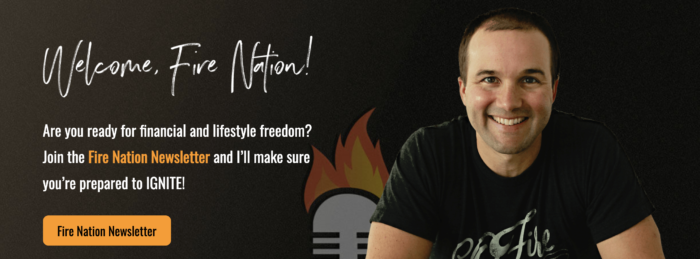


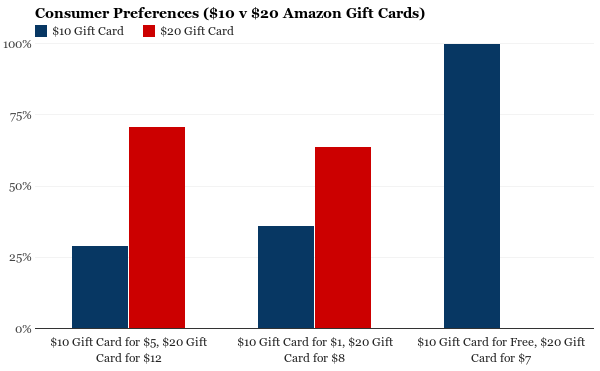
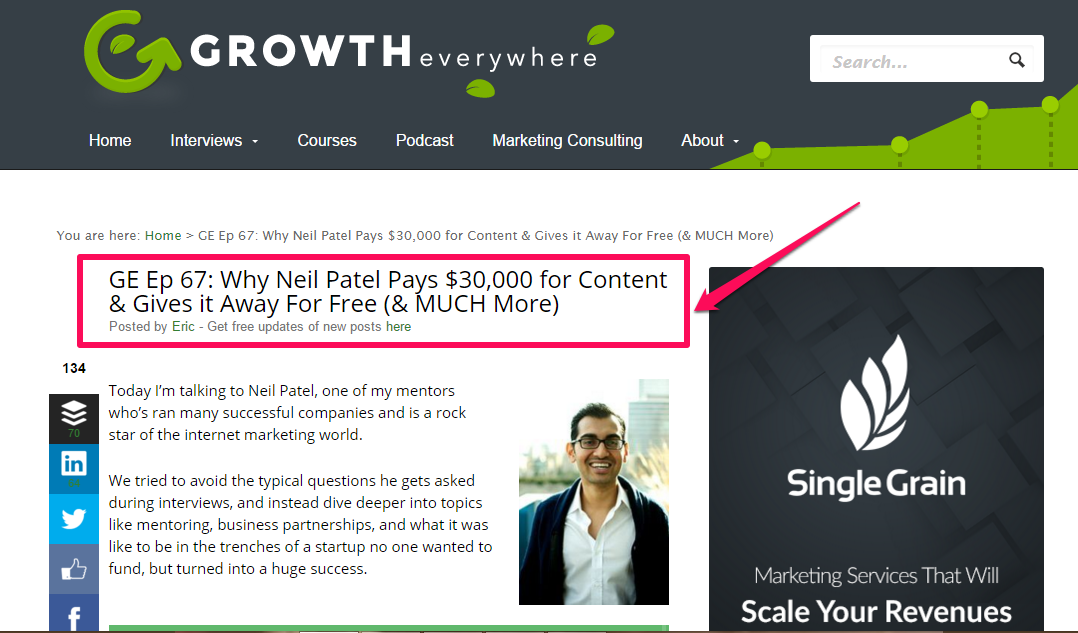

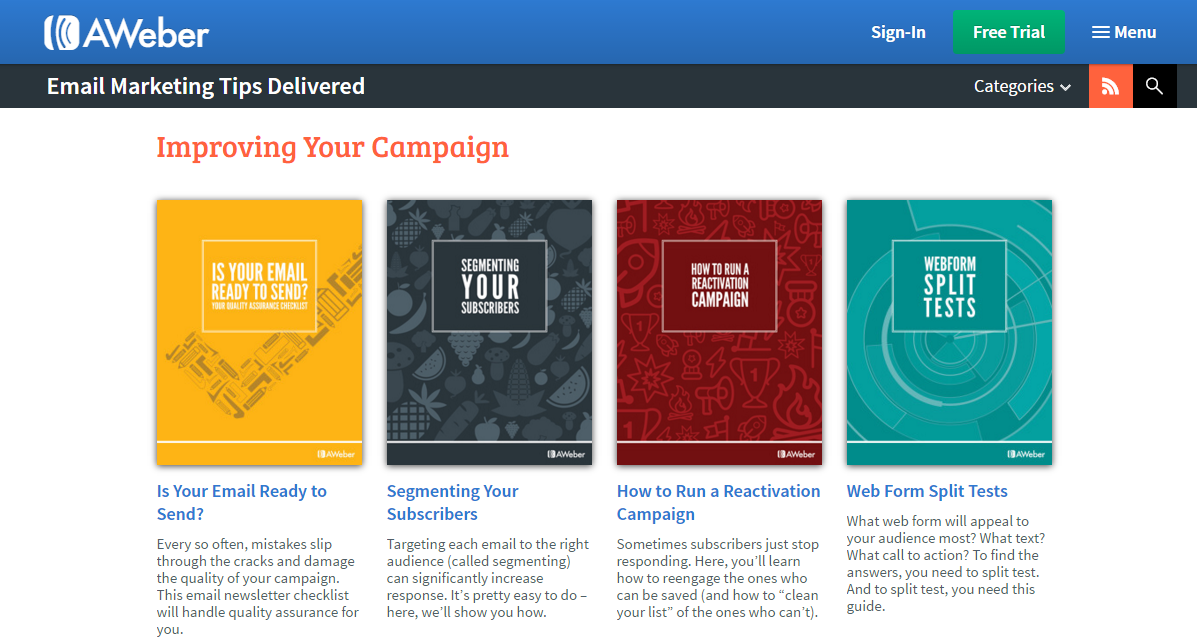
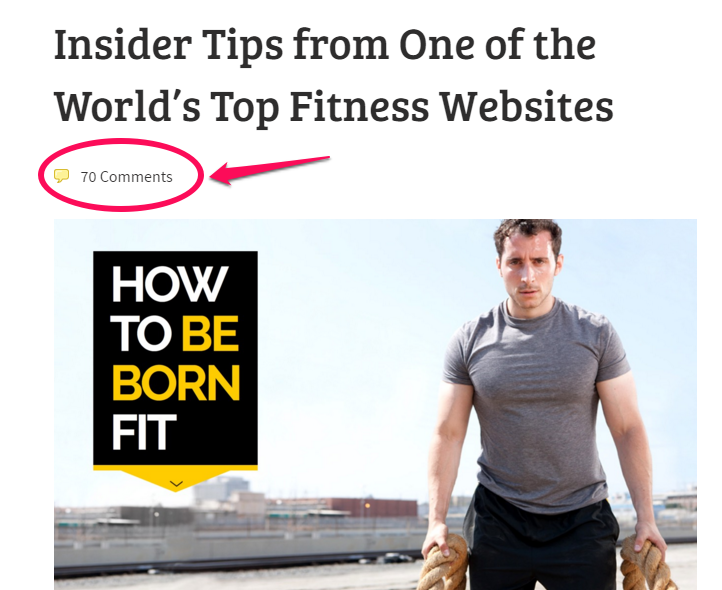
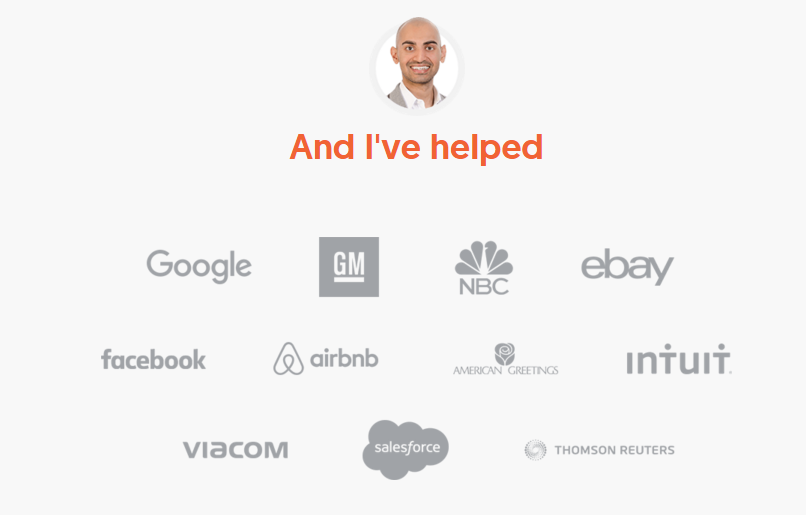
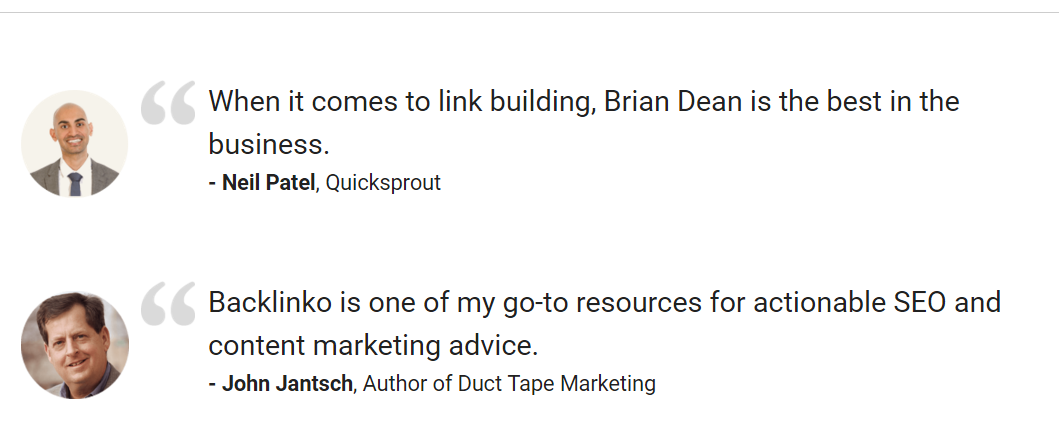

Comments (78)